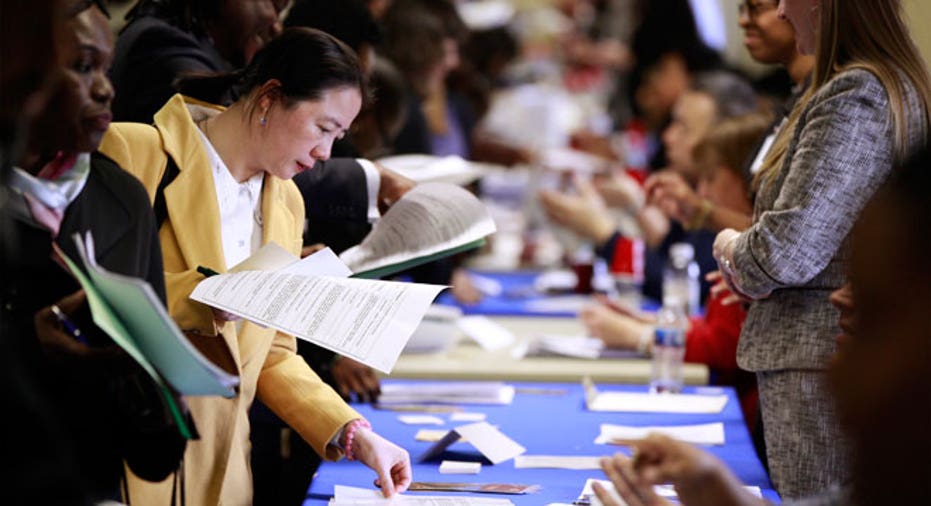Focus Back on Unemployment Rate with March Jobs Report

The headline unemployment rate has returned to the spotlight ahead of Friday’s release of the government’s March jobs report.
Economists are predicting the addition of 200,000 new jobs and that the unemployment rate will fall to 6.6%, down from 6.7% in February. The economy added 175,000 jobs last month, a stronger than expected number given the harsh winter weather that made hiring difficult in many areas of the country.
David Kelly, chief global strategist at JPMorgan Funds, suggested that based on recent low levels of unemployment claims, the number of jobs added in March could surpass 200,000.
“If this transpires, then absent negative revisions to prior months, the U.S. will finally have replaced all of the 8.8 million private sector jobs lost in the last recession,” Kelly said.
Weekly unemployment claims data released Thursday was slightly higher than expected, but the four-week moving average, which is considered a better barometer of long-term trends, is at a six-month low.
For months, Federal Reserve policy makers have been downplaying the importance of the unemployment rate, saying they will be using an array of economic indicators to determine future monetary policy -- notably the timing for raising interest rates -- rather than leaning primarily on the jobless rate.
At their March meeting, the policy setting Federal Open Market Committee ditched a 6.5% unemployment rate threshold for raising interest rates, pointing to the importance of other indicators such as gross domestic product and inflation.
But the Fed statement was criticized by many as being vague.
On Monday, in a speech that focused heavily on the personal toll stubbornly weak U.S. labor markets have taken on individual Americans, Fed Chair Janet Yellen provided more specifics, saying interest rates could start moving higher once the unemployment rate fell to a range of 5.2% to 5.6%. At that range, inflation would become more of a risk because wages would rise as the labor market tightens, pushing consumer prices higher.
Yellen in particular among her Fed colleagues has made unemployment and its personal toll a focus of her career’s research, and Monday’s speech made it clear that the issue will be at the center of the Fed’s policy decisions.
Global stock and bond markets have moved on from the Fed’s tapering program, accepting the likelihood that bond purchases by the central bank will continue to decrease by $10 billion each month until the program expires later this year. Now investors are consumed by the timing of interest rate hikes, which isn’t likely to happen at least until the second half of 2015.
As the unemployment rate ticked lower last year and approached the now-discarded 6.5% threshold, many economists noted that the rate was falling but labor markets weren’t strengthening.
With that in mind, more emphasis has been placed on other elements of the government’s labor report such as the labor force participation rate, hourly wages and the number of short-term hires and part-time workers.
The labor force participation rate, which measures the number of people actively seeking work, is at its lowest level since the late 1970s, a result of large numbers of baby boomers retiring and people leaving the workforce out of frustration that they can’t find a job.
A factor that could impact the March labor participation rate is Congress’ decision in December not to extend jobless benefits to 1.3 million people. Actively seeking employment is a requirement of receiving unemployment insurance. But if a significant number of people stopped looking for work because they are no longer required to, it could lower the participation rate even further and bring down the unemployment rate with it.
“All of this is of particular importance to the bond market as a faster-tightening labor market will cast doubt on the Federal Reserve’s relatively cautious forecasts and increase speculation about a faster-than-expected Fed tightening cycle in 2015,” Kelly said.